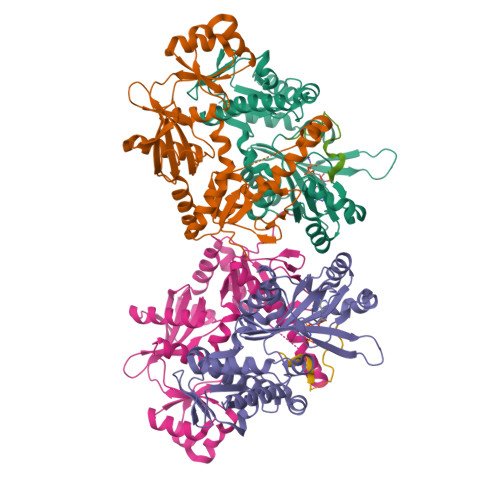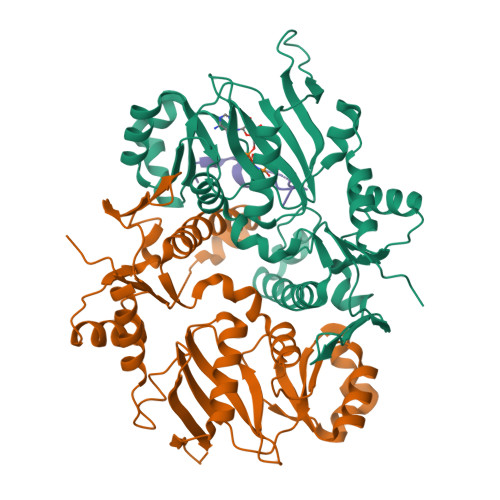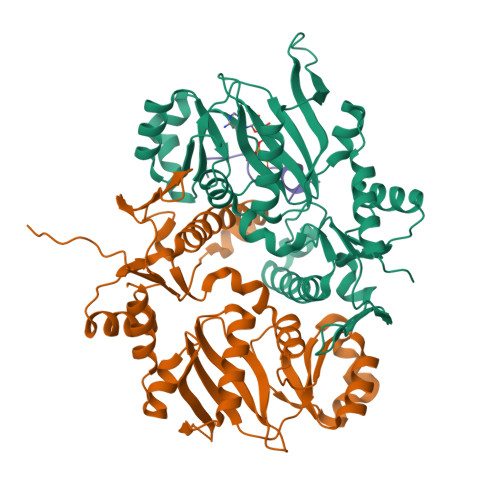Molecular mechanism underlying substrate recognition of the peptide macrocyclase PsnB.
Song, I., Kim, Y., Yu, J., Go, S.Y., Lee, H.G., Song, W.J., Kim, S.(2021) Nat Chem Biol 17: 1123-1131
- PubMed: 34475564
- DOI: https://doi.org/10.1038/s41589-021-00855-x
- Primary Citation of Related Structures:
7DRM, 7DRN, 7DRO, 7DRP - PubMed Abstract:
Graspetides, also known as ω-ester-containing peptides (OEPs), are a family of ribosomally synthesized and post-translationally modified peptides (RiPPs) bearing side chain-to-side chain macrolactone or macrolactam linkages. Here, we present the molecular details of precursor peptide recognition by the macrocyclase enzyme PsnB in the biosynthesis of plesiocin, a group 2 graspetide. Biochemical analysis revealed that, in contrast to other RiPPs, the core region of the plesiocin precursor peptide noticeably enhanced the enzyme-precursor interaction via the conserved glutamate residues. We obtained four crystal structures of symmetric or asymmetric PsnB dimers, including those with a bound core peptide and a nucleotide, and suggest that the highly conserved Arg213 at the enzyme active site specifically recognizes a ring-forming acidic residue before phosphorylation. Collectively, this study provides insights into the mechanism underlying substrate recognition in graspetide biosynthesis and lays a foundation for engineering new variants.
Organizational Affiliation:
Department of Chemistry, Seoul National University, Seoul, South Korea.





















